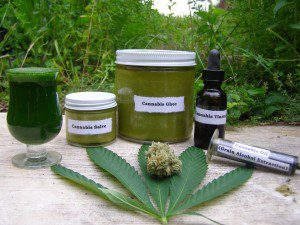Guest Writer for Wake Up World
Hemp, Cannabis sativa, is one of the world’s oldest sources of food and medicine, with a history that dates back at least ten thousand years. It relieves glaucoma, epilepsy, migraines, insomnia, asthma, the nausea associated with AIDS and chemotherapy, and a host of other conditions. It was once a staple in every American medicine cabinet, but because hemp is the plant from which marijuana is derived, it has been made unavailable to consumers until recently. Now products made from imported hemp-seed are sold by stores and mail-order companies across the United States to satisfy a growing demand.
Why Hemp?
Let’s start out with the irrefutable qualities of hemp, and how resourceful and versatile this God-given plant is. Firstly, Hemp seed is not psychoactive and cannot be used as a drug. As a food, Hemp Seed is far more nutritious than soybean, contains more essential fatty acids than any other source, is second only to soybeans in complete protein (but is more digestible by humans), is high in B-vitamins, and is 35% dietary fiber. For our health, hemp has been proven to create miraculous results. Hemp can also be used to create textiles, building materials and hygiene products. The list goes on…..
A recommended read on the subject is “Hemp for Health: The Medicinal and Nutritional Uses of Cannabis Sativa“. Hemp for Health reveals the developments that have returned this ancient plant to the forefront of health and nutrition and that have doctors calling for its legalization.
The author provides everything from recipes using hemp-seed, and an analysis of cannabis’s therapeutic effect on the nervous system, to current information on bills that are currently moving through several state legislatures to legalize domestic hemp production.
There are Differences Between Cannabis and Hemp…
To break the stigma associated with marijuana, it is important to actually understand the difference between the two plants.
The two are related through the same genus of plant. While industrial-grade hemp is a rather helpful resource in the world, it lacks the stimulating power of the substance known as delta-9 tetrahydrocannabinol, or for short, THC. It is this active chemical of THC that brings about the “high” associated with marijuana.
Hemp contains 1.5% of this substance, while marijuana possesses between 4 % and 20%. In Canada, the legal amount of THC used to create products cannot exceed 0.3%. Overall, the plants are rather close in details, but supply very different functions for many dissimilar reasons, which especially shows through in the physical makeup of the two plants.
Hemp is much stronger than the marijuana variety, meaning it holds the possibility to create a wealth of raw materials. Marijuana is actually quite delicate, eliminating it as a contender regarding serving a purpose to benefit mankind in a manner acceptable by law (with the exception of medicinal uses).
Farming practices also dictate the amount of THC produced by the plant. The unfertilized female species of cannabis sativa L contains the highest amount of THC, thus the male species is removed to prevent pollination, increasing it’s psychoactive properties dramatically. Reference
How to Make Tinctures And Herbal Extracts:
Herbs: Either fresh or dried finely chopped herbs can be used. Use of one pint of menstruum to two ounces of dried herbs, or about two handfuls of fresh.
Menstruums: There are three basic menstruums, or solvents used to extract the chemical compounds of herbs in tinctures, alcohol, glycerin, and vinegar. Alcohol is the most used because it can extract fats, resins, waxes,most alkaloids, and some of the volatile oils, as well as many other plant compounds. Water is also necessary to extract the water soluble plant chemicals. Using an 80 to 100 proof alcohol such as vodka, brandy and gin provides the alcohol-water ratio you need without having to add anything. If pure grain alcohol (190 proof) is used, water will have to be added. Don’t use city tap water that contains chlorine, use either distilled or pure spring water.
The important thing is to completely cover the herbs, leaving a couple of extra inches of liquid about the herbs to allow for swelling as the herbs absorb the liquid. Leave some headroom in the jar. If using vinegar, warm first before pouring it over the herbs.
Procedure for making an easy tincture:
- Chop herbs finely
- Place in a glass jar, labeled with the current date and name of the herb
- Add sufficient liquid menstruum to completely cover the herb
- Cap with a tight fitting lid, put the jar in a dark place at room temperature, and shake at least once daily.
- After 2 to 3 weeks, strain the contents through several layers of cheesecloth.
- Allow to settle overnight in a clean jar
- Restrain through a filter paper
- Store in a labeled, amber glass bottle away from light and heat.
The Chinese macerate herbs for months sometimes even years. For stronger tinctures a suggested time can be 4 to 6 weeks. The duration depends on the mixture and on your patience, in time you will develop your own style. I use a kitchen cupboard that I open on a regular basis, so I don’t forget the shake the bottle. Tinctures will keep for 6 months. The standard dose is one tablespoon in a wineglass of water once or twice a day.
Liniments are made exactly the same as herbal tinctures, except they are meant for external use. Make sure and label your liniments “FOR EXTERNAL USE ONLY” , when using a solvent that is inedible such as rubbing alcohol.
Using vinegar to tincture herbs. Alcohol has mostly displaced vinegar as a menstruum for making liquid herbal extracts, as it is far more efficient in extracting and preserving the medicinal properties of herbs. Vinegar is however passable solvent and useful in cases where you wish to avoid alcohol. When used in conjunction with alcohol, vinegar can sometimes assist in the extraction of alkaloid (base) substances from herbs. Such an extract containing both vinegar and alcohol is known as an acetous tincture.
How to Make Cannabis Ghee
Description:
Ghee is clarified butter. It contains mostly butter fat and trace amounts of water and milk solids.
Ingredients for Ghee:
2lb unsalted butter
Making the Ghee:
1. Melt the butter in a pan or a double boiler at a low to medium temperature so that the butter is hot enough to boil.
2. A froth will form on the surface of the butter.
3. Remove the froth with a spoon.
4. Continue until no more froth appears.
5. Store in an airtight container in the refrigerator.
Ingredients for Cannabis Ghee:
1lb Ghee
1oz/28g of finely ground cannabis*
*The finer the powdered cannabis, the better this method will work.
Making the Cannabis Ghee:
1. The ghee is melted in a pan or double boiler and allowed to simmer.
2. Add the cannabis slowly, and stir often.
3. Allow to simmer for an hour.
4. Strain with cheese cloth or a fine mesh strainer, and allow to cool.
5. Store in an airtight container in the refrigerator.
“Let food be thy medicine and medicine be thy food.” ~ Hippocrates ca. 400 BC
A note from WuW: The possession and cultivation of hemp is still prohibited by law in many countries. Wake Up World does not advocate breaking the law, Wake Up World advocates changing the law.
About the author:
Yolanda Bertaud, MSOM, HHP, CH. is an Holistic Health Practitioner, Chinese Herbalist and researcher with a Masters of Science and Oriental Medicine. She is also an advocate for natural organic foods, gardening and farming methods, humane treatment of animals, and sustainable treatment of our environment.
As a health practitioner, Yolands is available for personalized on-line consultations to support your health, wellbeing and diet. To schedule a private online (Skype) consultation, please contact Yolands via email: [email protected]. For more information, please visit Yolanda’s website, Facebook page and Twitter profile.

If you've ever found value in our articles, we'd greatly appreciate your support by purchasing Mindful Meditation Techniques for Kids - A Practical Guide for Adults to Empower Kids with the Gift of Inner Peace and Resilience for Life.
In the spirit of mindfulness, we encourage you to choose the paperback version. Delve into its pages away from screen glare and notifications, allowing yourself to fully immerse in the transformative practices within. The physical book enriches the learning process and serves as a tangible commitment to mindfulness, easily shared among family and friends.
Over the past few years, Wake Up World has faced significant online censorship, impacting our financial ability to stay online. Instead of soliciting donations, we're exploring win-win solutions with our readers to remain financially viable. Moving into book publishing, we hope to secure ongoing funds to continue our mission. With over 8,500 articles published in the past 13 years, we are committed to keeping our content free and accessible to everyone, without resorting to a paywall.

 By
By 






